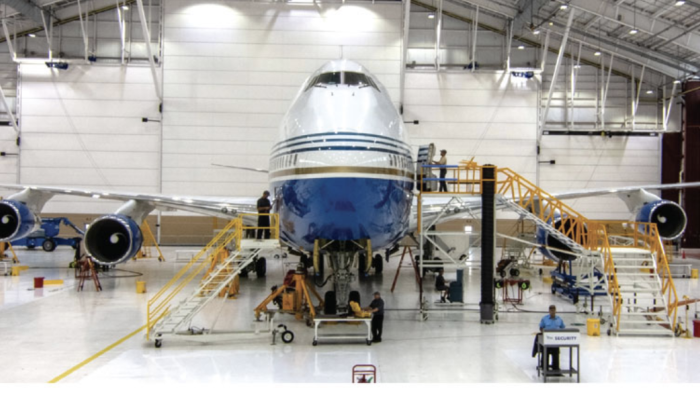The Transportation Security Administration (TSA) yesterday released a Notice of Proposed Rule Making (NPRM) to strengthen aircraft repair station security. The proposed regulation has been in the works since 2003, when Congress ordered the TSA to develop security requirements for repair facilities within eight months. The deadline passed with no results and Congress gave the TSA another year to comply.
According to the TSA, the intent of the regulation is to establish security requirements for maintenance and repair work conducted on aircraft and aircraft components at domestic and foreign repair stations certified by the FAA.
“This proposed rule supplements FAA requirements that protect aircraft undergoing repairs from terrorist threats,” said Lee Kair, assistant administrator of the agency’s office of security operations. “By enhancing repair station security, this rulemaking guards against the potential threat of an aircraft being destroyed or used as a weapon.”
According to Kair, the increased security protections proposed in the NPRM are designed to build on the “existing, extensive” FAA certification and safety requirements for repair stations. The proposed regulation would require FAA-certified foreign and domestic repair stations to adopt and carry out a standard TSA security program to safeguard the security of a repair station, the repair work conducted and all aircraft and aircraft components at the station. The program will require certified stations to implement strict access controls, provide security awareness training and allow for Department of Homeland Security (DHS) inspections. One of the contentious issues within the industry is that aircraft repair stations vary widely in size, type of repair work performed, number of employees and proximity to an airport. “I'm afraid of a one-size-fits-all mentality,” one MRO operator told AIN. “There’s a big difference between sitting at a desk in Washington making decisions on how operators should run their business and actually being out here running a business. No one has ever accused the federal government of being too supportive of small business.”
Eric Byer, v-p of government and industry affairs for the National Air Transportation Association, agreed with the concern about a one-size-fits-all policy. Byer told AIN his association is reviewing the NPRM and will provide comprehensive comments. The association will also provide bullet points that member companies can use in submitting their own comments to the TSA.
“At first glance, the devil remains in the details covered by the standard security program [SSP] so we still have much to learn about the NPRM’s impact on the repair station community,” Byer said. “The proposed rule does appear to recognize the breadth of the repair station community so we are hopeful the requirements contained within the SSP recognize those small repair facilities that work on aircraft at general aviation airports or may not even be based at an airport. We’ll have to wait and see how this plays out.” The NPRM fulfills the Vision 100-Century of Aviation Reauthorization Act’s requirement for the DHS to put forth security regulations for domestic and foreign aircraft repair stations. The public has 60 days to comment on the NPRM once published in the Federal Register.







